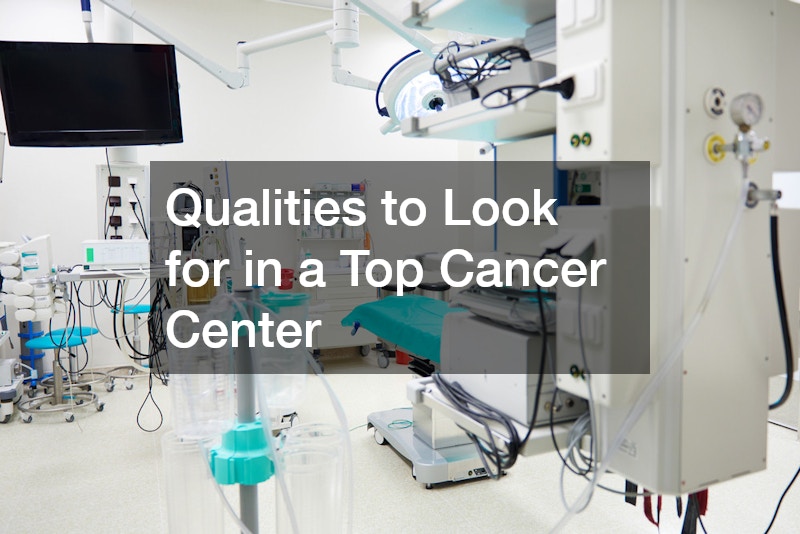Choosing the right cancer center is a pivotal decision that impacts a patient’s journey through diagnosis, treatment, and recovery. A top cancer center is defined by certain crucial aspects that ensure comprehensive care and improved outcomes. These qualities not only enhance the prospects of recovery but also provide comfort and confidence to patients and their families. From the expertise of a multidisciplinary team to the amenities offered, every aspect plays a crucial role in the holistic healing process.
Understanding these qualities allows patients to make informed decisions about where to seek care, ultimately affecting their experiences and quality of life during and after treatment.
What is the Importance of a Multidisciplinary Team?
Collaborative Care Approach
A multidisciplinary team brings together specialists with diverse expertise, ensuring comprehensive cancer care that addresses all facets of the disease. Collaboration among oncologists, radiologists, surgeons, pathologists, and nurses ensures that each patient receives a well-rounded treatment plan. This team approach facilitates seamless communication and coordination, reducing the chance of miscommunication and errors. As a result, patients benefit from a cohesive strategy that addresses their unique needs and enhances treatment efficacy.
Expertise in Various Cancer Types
Top cancer centers boast specialists who focus on a wide range of cancer types, bringing deep knowledge and innovative approaches to their treatment. This level of specialization is crucial because different cancer types require specific diagnostic and therapeutic strategies. Having access to experts who understand the intricacies of specific cancers ensures that patients receive the most accurate diagnoses and effective treatment plans. It also means that centers can offer cutting-edge therapies that are tailored to the unique characteristics of each cancer.
How are Advanced Technologies and Treatments Utilized?
Latest Diagnostic Tools
Advanced diagnostic tools such as molecular imaging and genomic profiling enable early and precise detection of cancer, which is critical for effective treatment. These technologies provide detailed insights into the molecular makeup of tumors, allowing for personalized treatment strategies. Early detection not only improves the chances of successful treatment but also allows for less invasive interventions. This can lead to quicker recovery times and better quality of life for patients.
Innovative Treatment Options
Leading cancer centers offer a wide range of cutting-edge therapies, from targeted therapies and immunotherapies to precision radiation techniques. These innovative treatments are designed to attack cancer cells while minimizing damage to healthy tissues. Access to such technologies means that patients have a better shot at recovery with fewer side effects compared to traditional treatments. This can significantly improve a patient’s quality of life during and after treatment.
Why is a Personalized Treatment Plan Essential?
Tailored Therapy Plans
Personalized treatment plans consider the patient’s unique genetic makeup, cancer type, and overall health to devise the most effective therapy. This patient-centered approach enhances the efficacy of treatments and reduces unnecessary side effects. By tailoring therapies, healthcare providers can target the specifics of the cancer, increasing the chances of successful outcomes. It also empowers patients, as they become partners in their treatment plans, contributing to improved compliance and satisfaction.
Adaptability and Flexibility
A top cancer center’s ability to adapt treatment plans according to patient response and emerging research is crucial. It ensures that therapies remain relevant and effective even as new information becomes available. This flexibility allows oncologists to pivot quickly if a particular treatment is not yielding the desired results, thereby optimizing patient outcomes. It also reflects the center’s commitment to integrating new knowledge and technologies into clinical practice.
What Role Do Research and Clinical Trials Play?
Access to Groundbreaking Research
Research is a cornerstone of progress in cancer treatment; top cancer centers are often at the forefront of groundbreaking studies. Involvement in research ensures that these centers can offer the newest advancements in therapy and diagnostics to their patients. Their active participation in research initiatives often results in quicker implementation of new findings into clinical practice, benefiting patients faster. This proactive stance not only elevates the institution’s reputation but also attracts top talent to contribute to ongoing studies.
Availability of Clinical Trials
Clinical trials offer patients access to novel therapies and approaches that are not yet accessible through standard treatment protocols. Participating in these trials can provide a lifeline for patients, especially when conventional treatments have been exhausted. Top cancer centers prioritize offering a wide array of clinical trials, allowing patients to benefit from cutting-edge research. These trials bridge the gap between laboratory discoveries and in-patient treatments, ensuring that patients are the first to benefit from innovative solutions.
How Does Patient Support and Amenities Impact Care?
Comprehensive Support Services
Support services play a pivotal role in assisting patients through the challenges of cancer treatment, addressing emotional, nutritional, and rehabilitative needs. Leading cancer centers provide comprehensive services tailored to enhance patient well-being and recovery. Counseling, nutritional advice, and rehabilitation programs form an essential support structure that aids patients in managing treatment side effects. Such services contribute significantly to maintaining a positive outlook, which is crucial for overall treatment success.
Patient and Family Amenities
The comfort and convenience of patients and their families are greatly enhanced by the quality of amenities provided by top cancer centers. Facilities such as serene waiting areas, family accommodation, and recreational spaces offer a much-needed respite during challenging times. Such amenities not only ease the stress of treatment but also contribute to the overall healing environment. It enables family members to stay close and supportive, fostering a supportive community around the patient.
.




